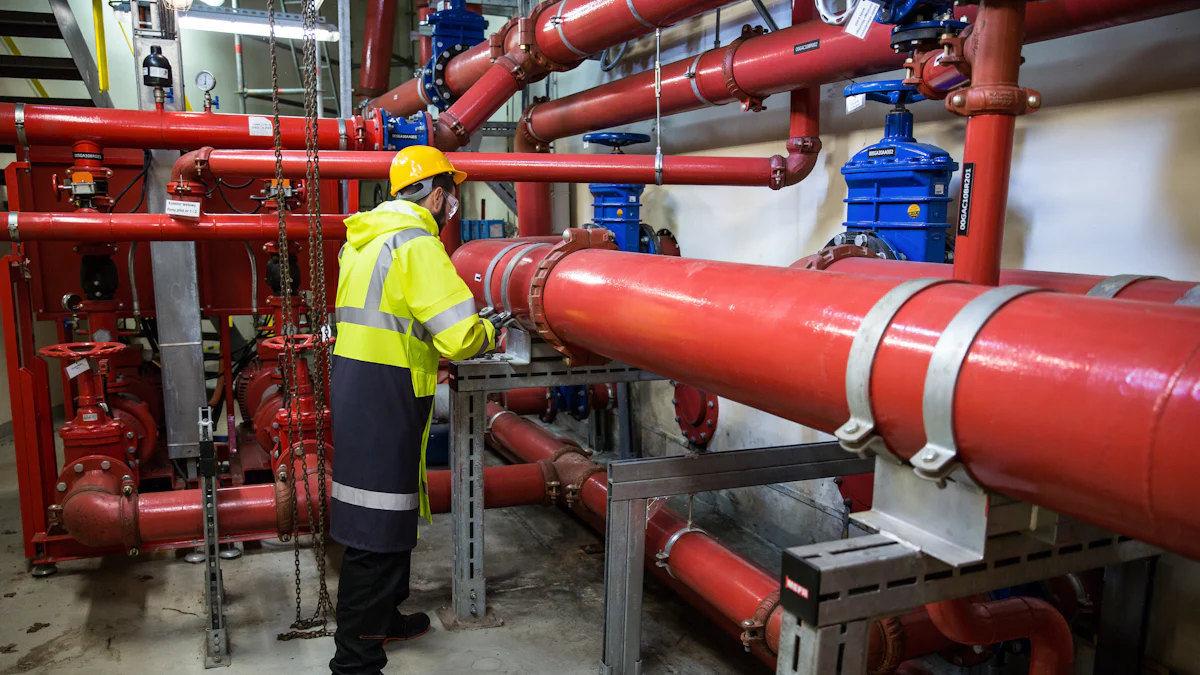
News

Variable Frequency Drives (VFDs) have essential Protection Functions to safeguard motors. These features ensure that systems remain safe and operate efficiently for a longer duration. VFDs assist by managing how motors accelerate or decelerate. They prevent damage by monitoring for overloads and potential issues. Additionally, they modify motor speed to conserve energy and prevent overheating.
Key Takeaways
VFDs provide crucial protection functions like overcurrent, overvoltage, and ground fault protection, ensuring motors operate safely and efficiently.
Regular monitoring of motor temperature and voltage by VFDs prevents overheating and equipment damage, extending the lifespan of your systems.
Advanced features in VFDs, such as communication and diagnostic tools, allow for early problem detection, saving time and reducing repair costs.
Key Protection Functions of VFDs
Overcurrent Protection
Overcurrent protection is very important in VFDs. It keeps the motor safe by checking the current flow. If the current goes too high, the VFD takes action. This stops parts from overheating and avoids electrical fires. VFDs often protect motors from overloads. They use systems like current limits and short-circuit protection. These features help your equipment work well and last longer.
Overcurrent protection works during short circuits or motor overloads. It also helps if too much current is used. Fixing these problems quickly saves money and time.
Overvoltage and Undervoltage Protection
Voltage changes can damage motors and equipment. VFDs stop this with overvoltage and undervoltage protection. They watch voltage levels and fix problems if they go too high or low. VFDs also help motors start and stop smoothly. This reduces stress and wear on motor parts, making them last longer.
By keeping voltage steady, VFDs protect the system and keep it running well. This makes them very useful for keeping equipment efficient and durable.
Overtemperature Protection
Motors can overheat from poor airflow, overloading, or hot surroundings. VFDs solve this by checking motor temperature all the time. If overheating happens, they lower the load or turn off the motor. Good airflow and regular care make this protection even better.
Stopping overheating helps motors stay at the right temperature. This improves how they work and protects delicate parts from harm.
Ground Fault Protection
Ground faults happen when electricity flows where it shouldn’t. This can cause shocks or damage. VFDs make systems safer by finding ground faults. They use special tools to detect these problems. When a fault is found, the VFD stops the circuit and fixes the issue.
This protection lowers the chance of accidents and keeps systems working well. It also stops high currents from breaking fuses or tripping breakers, keeping equipment safe.
Advanced Protection Features in VFDs
Phase Loss and Imbalance Protection
When one phase is lost or unbalanced, motors can struggle. Uneven voltage makes motors use uneven current. This causes overheating and wastes energy. VFDs watch voltage levels to find these problems. They adjust the load or slow the motor to stop damage.
Sometimes, light loads cause small current imbalances in VFDs. This happens because of how VFDs are built. But in regular systems, constant imbalances mean bigger issues. VFDs fix these problems so motors work well without losing power.
Motor Stall and Overload Protection
A motor stall happens when it can't turn due to heavy loads or broken parts. VFDs handle stalls differently based on the problem:
VFDs solve these problems to keep motors safe and working well.
Communication and Diagnostic Features
New VFDs have tools to check and share system health. These tools help you see problems early and plan repairs. You can fix things before they break, saving time and money.
Some common VFD communication systems are:
These tools help find problems and make equipment last longer.
VFDs help keep your equipment safe and working well. They check motor health, find problems, and fix them quickly. This reduces breakdowns and lowers repair costs. By protecting motors and systems, they make equipment last longer and work better.
When choosing a VFD, look for key safety features. Overcurrent, overvoltage, and ground fault protection are very important. These features keep things safe, improve how they work, and save money. Picking the right VFD helps you have a strong and reliable system.
FAQ
What happens if a VFD doesn’t have protection features?
Without these features, motors can overheat or face voltage problems. This may cause expensive repairs, delays, or even broken equipment.
How do VFDs detect motor problems?
VFDs use sensors to check current, voltage, and temperature. They find problems early and fix them to avoid damage.
Can VFD protection features reduce energy costs?
Yes! VFDs save energy by stopping overheating and overloading. This lowers costs and improves motor efficiency.
Please give us a message